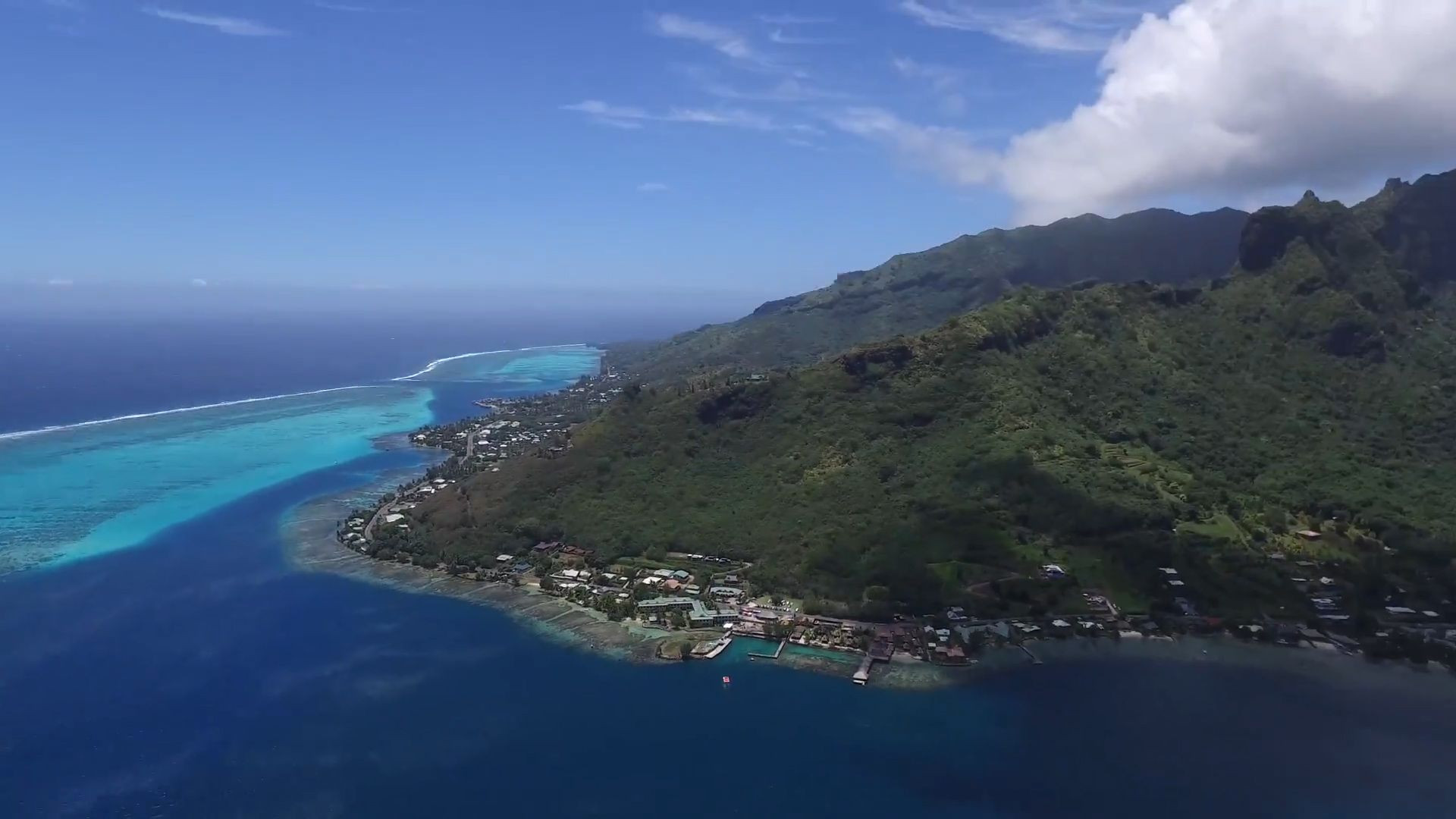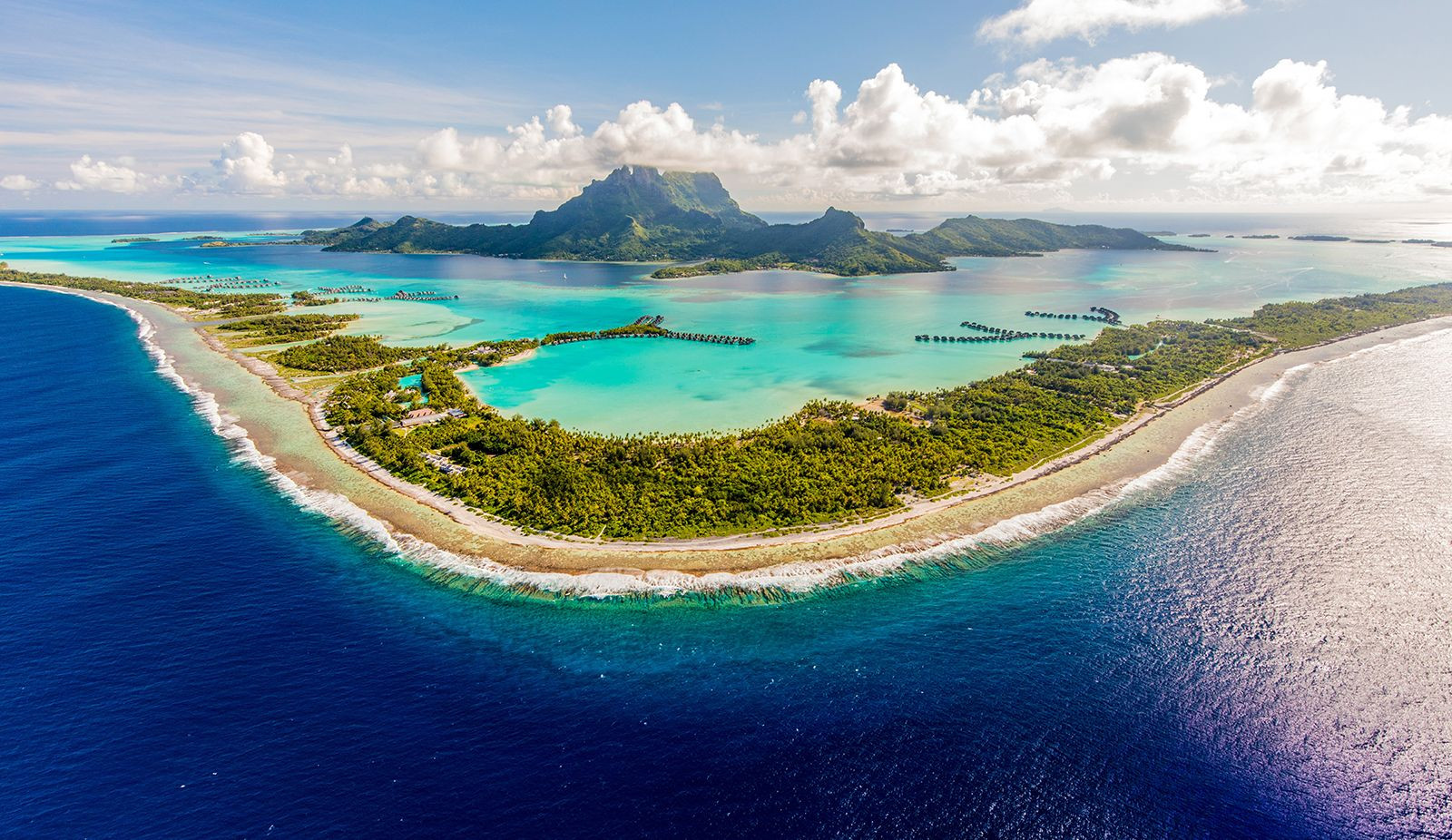French Polynesia, a name that conjures images of idyllic beaches and lush volcanic peaks, is a dream destination for many. But Where Is French Polynesia exactly? This stunning overseas collectivity of France is nestled in the heart of the South Pacific Ocean. To pinpoint its location more precisely, French Polynesia is situated about halfway between Australia and South America. It’s a vast expanse of islands scattered across an area roughly the size of Europe, although its total landmass is quite small.
French Polynesia is not a single island, but rather an archipelago comprised of several island groups. These islands are the peaks of underwater mountain ranges that run in a northwest-southeast direction beneath the Pacific waves. The most significant and populous of these groups are the Society Islands.
The Society Islands: The Core of French Polynesia
Accounting for a large portion of French Polynesia’s land area and population, the Society Islands are the westernmost group and are divided into two subgroups: the Îles du Vent (Windward Islands) in the east and the Îles Sous le Vent (Leeward Islands) to the west. Most of these islands, with the exception of a few coral atolls, are volcanic in origin, born from underwater volcanoes.
These volcanic islands are characterized by dramatic landscapes. Erosion has sculpted the volcanic cones into sharp crests and deep valleys that radiate outwards. Lush vegetation often blankets the mountains, which descend sharply to narrow coastal plains or directly into the clear waters of lagoons or the open sea. Barrier reefs, almost continuous circles around the islands, provide protection from the ocean’s powerful waves, creating calm, sheltered waters ideal for marine life and watersports.
 Marine biology students researching coral reefs in Moorea Island, French Polynesia
Marine biology students researching coral reefs in Moorea Island, French Polynesia
Tahiti, the largest island in French Polynesia, is part of the Windward Islands and stands out with its iconic silhouette. Formed by two ancient volcanic cones, it rises to a height of 7,352 feet (2,241 metres). Human settlement on Tahiti is concentrated along the coast and in the valley mouths, leaving the mountainous interior uninhabited. Just a short 8.5-mile (14 km) channel away from Tahiti lies Moorea. This high island is known for its stunning white coral sand beaches and is easily accessible from Tahiti by boat and small airplanes, largely thanks to a thriving tourism industry.
Approximately 75 miles (120 km) west of Tahiti, you’ll find the Leeward Islands. This group consists of five volcanic islands and four atolls, sharing a similar appearance with the Windward Islands. Raiatea, the largest and most populated of the Leeward Islands, forms a double island group with its neighbour Tahaa. Separated by a narrow channel of about 2 miles (3 km), Raiatea and Tahaa share the same underwater mountain base and are enclosed within a single barrier reef. Both islands feature coastal plains suitable for agriculture, particularly coconut palms and livestock. Vanilla cultivation also contributes to the local economy. Uturoa, located on Raiatea, serves as the main port for this island group. East of Raiatea is the picturesque island of Huahine, a volcanic island uniquely bisected by a shallow sea arm.
Further west of Raiatea lies Bora-Bora, a small but exceptionally beautiful island. Bora-Bora is sculpted from two volcanic peaks that ascend to 2,385 feet (727 metres) and 2,169 feet (661 metres), dramatically plunging into the lagoon below. Renowned for its beauty, Bora-Bora is a major hub for tourism in French Polynesia.
 Iconic volcanic peaks rising above the turquoise lagoon of Bora-Bora, French Polynesia
Iconic volcanic peaks rising above the turquoise lagoon of Bora-Bora, French Polynesia
Exploring Beyond the Society Islands
East of the Society Islands lies the Tuamotu Archipelago, a vast expanse of approximately 80 islands with a total land area of 266 square miles (689 square km). In stark contrast to the volcanic Society Islands, the Tuamotus are low-lying, flat islands or atolls made of coral, encircling lagoons. Their size varies considerably, from Rangiroa, spanning 30 square miles (75 square km), to tiny islets barely rising above sea level. The porous, coral-based soil and lack of permanent streams limit agricultural potential to mainly coconut trees. However, the lagoons are rich sources of fish, pearls, and mother-of-pearl. Rangiroa, with its airport, maintains closer connections to Tahiti, while life in other parts of the Tuamotus is more isolated, leading to emigration to Tahiti.
Administratively linked to the Tuamotu Islands, but geologically distinct, are the Gambier Islands, located at the southern end of the Tuamotu Archipelago. This group includes four larger, high volcanic islands and several smaller islets, totaling 14 square miles (36 square km). Mangareva, the main island, sometimes lends its name to the entire group.
Venturing northeast of Tahiti, about 900 miles (1,450 km), brings you to the Marquesas Islands. This group of 14 islands covers 405 square miles (1,049 square km). Some Marquesas islands are volcanic and rise to heights exceeding 4,000 feet (1,200 metres), characterized by sharp, twisting contours. Unlike the Society Islands, they lack protective barrier reefs, resulting in no coastal plains and challenging sea approaches. Settlement is confined to the valleys, where inhabitants engage in farming.
Finally, to the south of Tahiti, approximately 450 miles (720 km), lie the Tubuai, or Austral Islands, forming the southernmost part of French Polynesia. This chain of four islands, along with the isolated Rapa island to the southeast and the uninhabited Marotiri and Maria islands, covers 57 square miles (148 square km). All are volcanic in origin but are relatively low and rounded, reaching elevations between 270 to 1,440 feet (80 to 440 metres). The economy is based on agriculture, including taro, arrowroot, copra, market vegetables, and pandanus plaiting.
Like the Marquesas and Tuamotu-Gambier islands, the Tubuai Islands have limited connections with Tahiti. Challenging living conditions in these outer islands often lead to migration towards Tahiti and Papeete, its capital.
In conclusion, French Polynesia is located in a remote but incredibly beautiful part of the South Pacific Ocean. Its diverse geography, ranging from high volcanic islands to low coral atolls, makes it a fascinating and unique destination, spread across a vast oceanic area yet anchored by the vibrant Society Islands.

